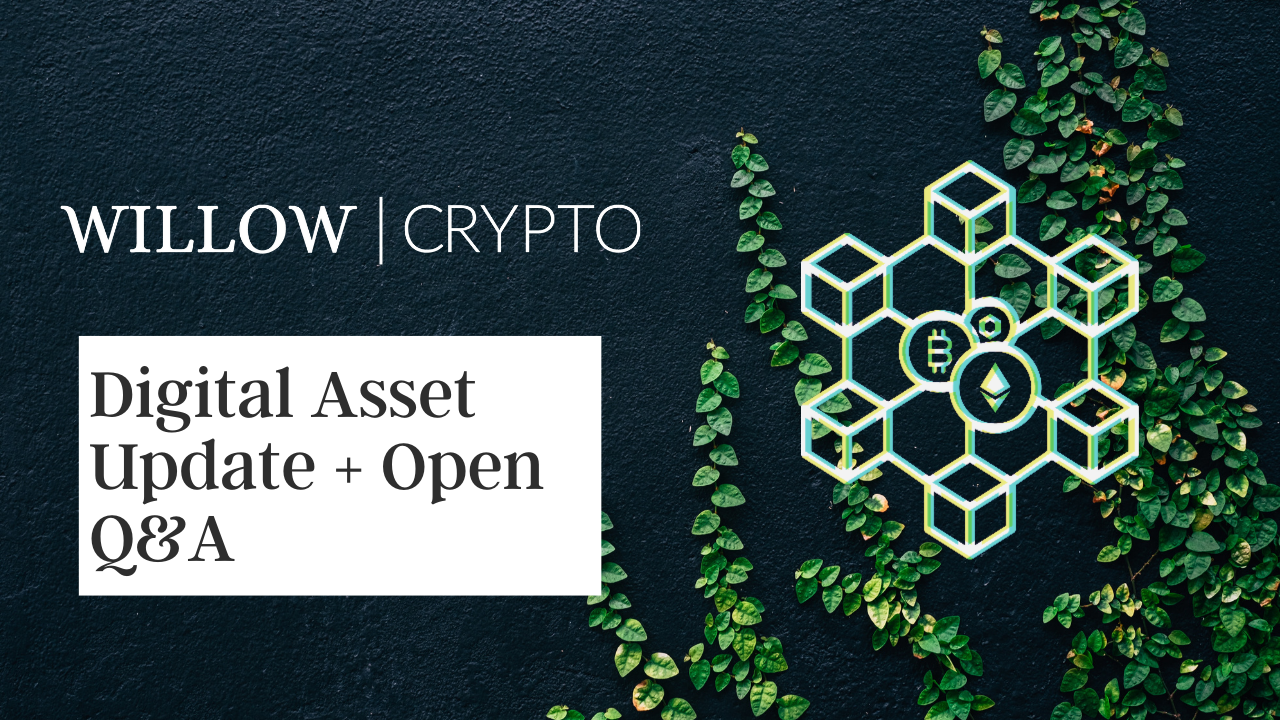Digital Asset Update + Open Q&A
See below for our Digital Asset Update + Open Q&A Summary points below the video.
Digital Asset Update + Open Q&A Video Summary:
- We are not surprised by the recent draw down in Bitcoin and Ethereum. We fully expect these trends of volatility to continue until this becomes a widely adopted asset class. This is why we want to ensure that everyone is aware of and comfortable with the risks associated with digital assets.
- El Salvador recently adopted Bitcoin as a legal tender alongside the US dollar. We question what other countries may follow suit and what impact that might have on the dollar long-term.
- We’ve been trying to answer the question of ‘how do you start to value digital assets’, especially with all the speculation out there. What are some tangible ways in which we can start to understand real value and utility? One of the ways is to look at the fees generated through the usage of different networks. Another is understanding how the tokenomics, of the economics of the digital asset, supply and demand, of the asset works. You can also compare the growth of different digital assets similarly to quarterly earnings calls in traditional finance – for user acquisition to fees generated, usage rates, number of holders, and so on and how these have changed year over year.
- Total value locked (TVL) is another interesting fundamental to follow. It shows how much of people’s digital assets they are locking in smart contracts – essentially making it inaccessible for a period of time in hopes of tapping leverage or earning an interest rate (think preliminary fixed income type products). Currently, this is cost-prohibitive for an individual to do a small transaction because the fees are too high to make it viable at scale. Bitcoin’s lightning network is a technology solution to bring those fees down so people can transact with smaller payments back and forth and to merchants. Bitcoin has about 45 million dollars locked into Lightning, while the TVL in DeFi built on Ethereum, is currently securing for closer to 47 billion dollars. Advances in Ethereum layer 2’s are also speeding up DeFi usage and lowering transaction costs considerably.
- The Beacon Chain on Ethereum already launched and is one of the stepping stones from ETH1.0 to ETH2.0. This change will make the network arguable more secure, reduce and massively increase scalability, so that instead of 14 or so transactions per second now, theoretically, you could get up to hundreds of thousands of transactions per second. This change of the consensus mechanism also reduces the amount of energy the Ethereum platform consumers by over 99%. Over 5 million Ether, which is worth billions of dollars, have already been locked into this contact that is inaccessible until what is called “the merge” happens, where the Ethereum network moves from the proof of work consensus to proof of stake consensus. This shows that there is a lot of trust being placed that this system will work.
- When you start to see big accounting firms continue to study and consult in a space, when you start to see those companies getting involved, there is more viability to what you’re seeing. We’re starting to see institutions adopt and develop blockchain technology at a much more rapid pace, as well as more blockchain related job postings popping up around the world.
Questions from Q&A
- “Is it better to have a fixed supply in your coin for your tokenomics?”
- “Do you continue to support Bitcoin given the apparent position of the Chinese Government?”
- “How can crypto environmental costs be curtailed to make it viable as a sustainable investment?”
- “What do you feel the new JPM coinlink and offer will do for the industry?”
- “Do you accept retirement accounts in this space?”
If you are interested in the Willow Crypto SMA, please click here or give us a call.
Best regards,
The Willow Team
+1 413 236 2980



